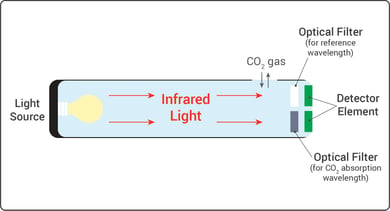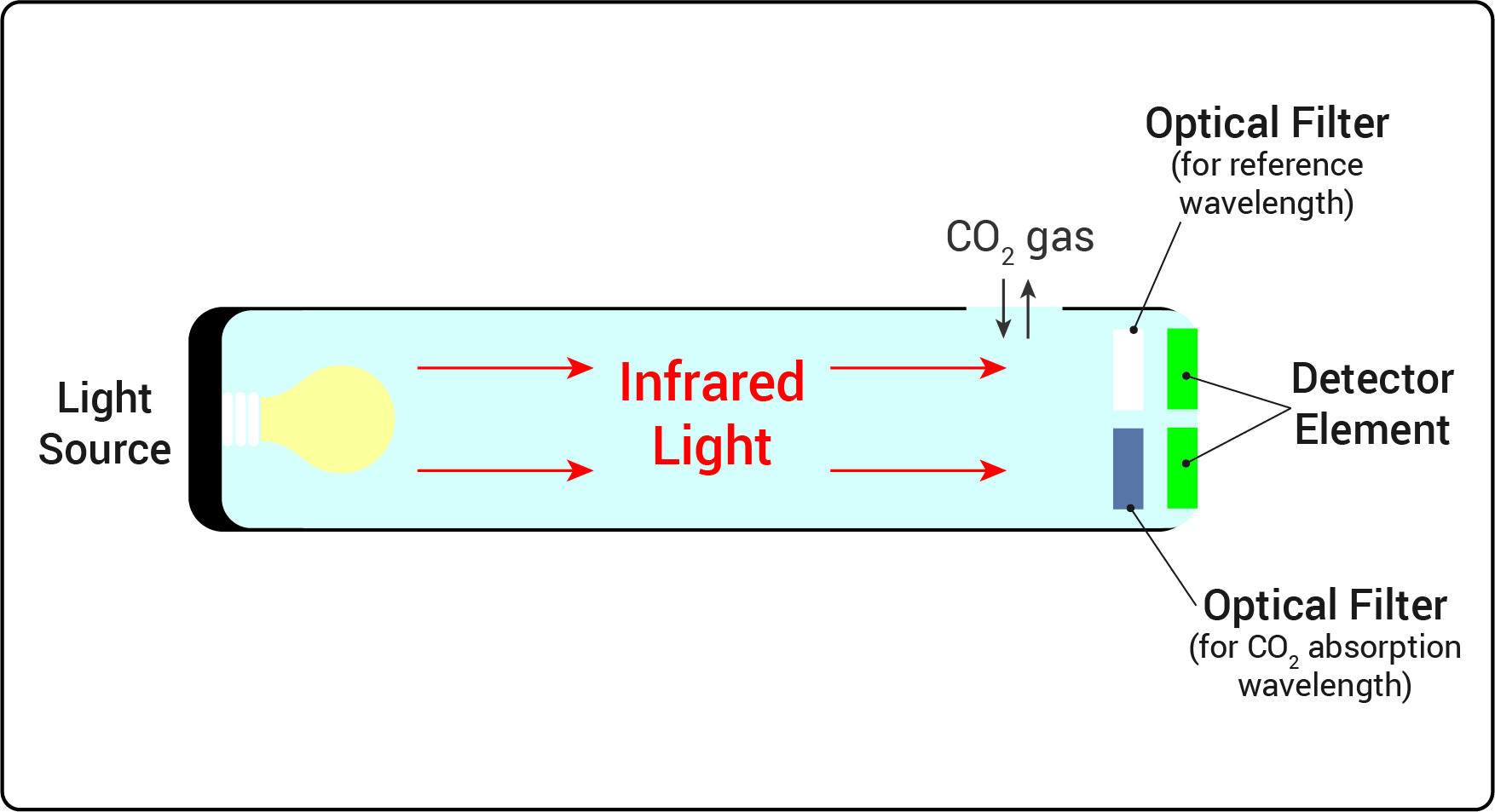Why is it necessary to monitor CO2 concentration in buildings?
Controlling and monitoring indoor levels of carbon dioxide is essential for everyone’s health, safety, and the energy efficiency of buildings. Similar to how we need to breathe fresh air, so do buildings. Ventilation in a building is the essential process of replacing stale air with fresh air. Without engineered ventilation, buildings become susceptible to stagnant air, mold, bacteria, and potentially harmful gasses like radon, VOCs (volatile organic compounds), and carbon dioxide. Prolonged exposure to these elements can lead to “sick building syndrome” where occupants experience acute health and comfort effects.
There are many different methods to bring fresh air into a building. A cost effective way is to bring fresh air in only when needed using a CO2 duct sensor within the HVAC system. One example is an HVAC system utilizing Demand Control Ventilation (DCV). A DCV sequence of operation responds by communicating with actuators to open dampers allowing fresh air in when the building calls for it. People in a building naturally increase CO2. A CO2 duct sensor measures and monitors the air and modulates an outside air damper proportionally. When CO2 levels drop the building automation systems (BMS) begins to modulate the dampers closed or to a minimum outdoor air requirement. Optimal workplace CO2 levels are 350 to 900 ppm. Complaints of drowsiness and poor air occur around CO2 levels over 1000 ppm. Headaches, poor concentration, loss of attention, increase heart rate, and slight nausea could occur with CO2 levels over 2000 ppm. In addition to workplace health and safety benefits, CO₂ sensors can enable energy savings by controlling the amount of fresh air brought into a building that needs to be heated or cooled.
Belimo combined CO₂/temperature sensors accurately measure and report precise CO₂ levels. The CO₂ self-calibration dual channel technology employs two detectors with different optical filters in front of each detector and measures both CO₂ and non CO₂ concentrations at different wavelengths. One detector measures the intensity of transmitted infrared light of the wavelength region that is absorbed by CO₂ gas.
The other detector measures the intensity of transmitted infrared light of the wavelength region that is not absorbed by CO₂ and thus being unaffected by CO₂ concentrations. The onboard microprocessor evaluates the two measurements and continuously calibrates the sensor accordingly. By using a second reference wavelength, aging effects of the light source/optical system are also compensated eliminating the need for manual calibration.
The Belimo CO2/temperature sensors feature accurate, reliable readings. The sensors are ideally suited for applications requiring 24/7 hours of operation such as hospitals, retail stores, nursing homes, manufacturing, schools and universities.
The dual channel CO2/temperature sensors are available with an increased range up to 5000 ppm available in degrees Fahrenheit (model 22DTC-5105), or Celsius (model 22DTC-1105) are ideal for indoor farming. Indoor farms have a higher demand to accurately monitoring CO₂ levels to increase plant health and crop yield


